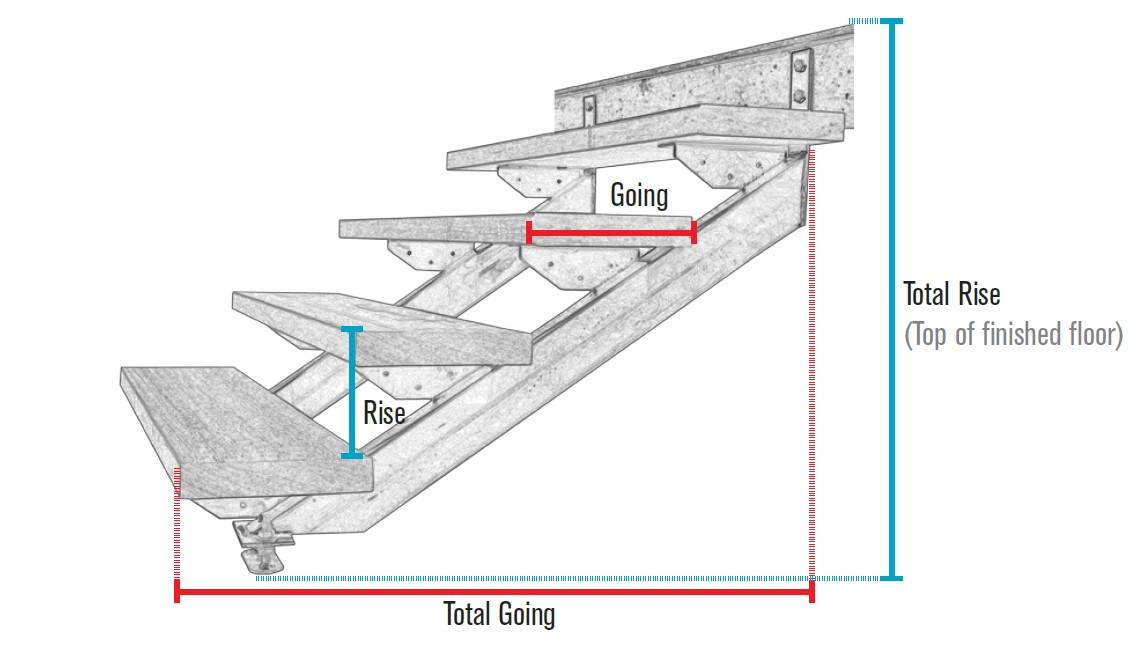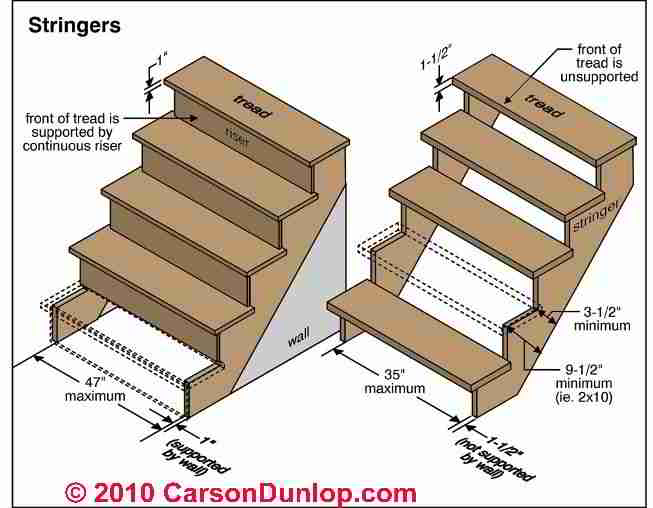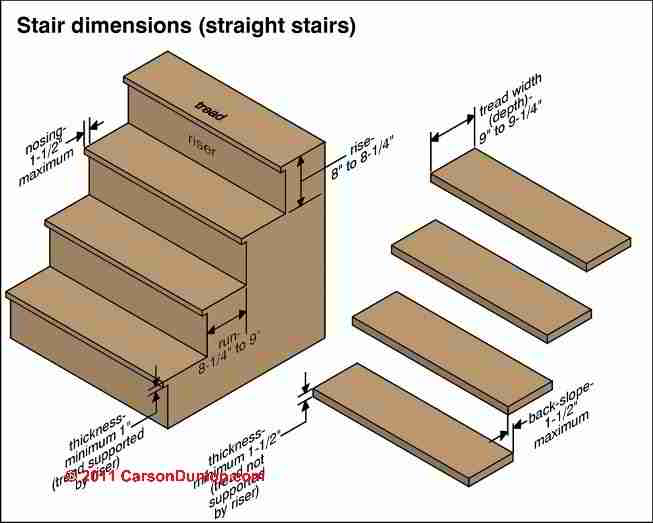minimum stair tread depth nz
A stair tread should be a minimum of 11 deep for stairs used as a means of egress. The city defines minimum tread depths at nine inches with the nosing the exposed part of the tread measuring between 075 inches and 125 inches.

Requirements Of Staircases General Guidelines About Heights Headroom Treads And Risers The Constructor
There is always one more riser than treads so for 14 risers there will be 13 treads.

. Find out how to build within the rules. The minimum permitted tread depth is 280 mm but with ample space for the stairs 300 mm treads have. Both requirements will be checked at entry inspection when a vehicle first enters New Zealand and at periodic warrant of fitness or certificate of fitness inspections.
The minimum permitted tread depth is 280 mm but with ample space for the stairs 300 mm. BRANZ Guideline February 2012 stair widths. For further universal design guides checklists visit wwwaucklanddesignmanualconz.
For safe healthy and durable buildings all building work in New Zealand must meet certain standards. Even step heights risers the riser height plus one tread depth should be in the 580 mm to 620 mm range. How deep should a stair tread be.
10 to 11 Inches Minimum. The image below shows how much a tyre touches a wet road at different speeds. While secondary private stairway will require the tread to be at least 250mm deep and the riser must be no more than 200mm high.
However a small number of tyres such as some retreaded or vintage tyres may not have moulded tread-depth indicators. Almost 90 of all New Zealandns do not know the legally required minimum tread depth of 15 mm. 1 for fire escapes steps for stairs shall have a run of not less than 255 mm and not more than.
The minimum legal depth is 15mm but the more tread you have the better the grip and the safer youll be. Virtually all tyres have moulded tread-depth indicators. Co-locate stairways with a step free route to provide users.
Planning a successful build. A tread depth of at least 275 mm. Finishes include F5 off the form or may be diamond honed while maintaining NZ standards in slip resistance coefficients.
The tread nosing must overhang between 34 and 1-14 unless the tread is 11-inches or greater in depth. Minimum riser height is eight inches. Single treads have been designed in many different profiles.
That means one in three New Zealandns is driving under illegal unsafe tyre conditions. The stair lip improves safety by extending the horizontal space available for ascent. Building Code compliance document D1AS1 does not specify a width for common or main private stairways the most common stairway applicable within residential buildings but recommends no less than 850 mm.
15mm is the minimum tread depth required for car tyres to get a Warrant of Fitness. Analysis of stairway related. Staircase Tread Run Depth.
NZS 142120018STAIRS 811 states in what building an accessible route is required Any stair or floor covering that is not rounded to 5mm min to 10mm max as shown in the diagram. Adequate tread depth is essential for stairway safety. However wet weather performance drops off rapidly once tread depth is below 3mm.
41 Pitch risers and treads 27 42 Width 30 43 Landings 31 44 Curved and spiral stairways 33 45 Stair winders 33 46 Visibility of stair treads 33 50 Fixed Ladders 34 51 General 34 52 Step. There are only minimum stair tread depth requirements. To avoid having to install nosing the code requires the depth of the.
Stair width of 9001100 mm. As for stair treads the depth should not be less than 10 inches however this will require nosing projections. Whilst this is the outlined requirements to.
1 Except as permitted for dwelling units and by Sentence 3475. 5 rows Riser height and tread depth should be of a uniform height within a tolerance of 5mm in one. Health and safety on site.
There is always one more riser than treads so for 14 risers there will be 13 treads. The tread depth is the distance from the front edge or nosing a tread projection that overhangs the riser below of. When designing stairs factors to consider are the design parameters given in D1AS1.
Avoid accidents and make site safety a priority.
Osha Stair Requirements To Keep Your Workplace Safe And Productive

Key Measurements For A Heavenly Stairway

Stair Calculator Stair Stringer Calculator Prices Australia

Stair Stringer Stair Tread Support Defects Hazards

Angles For Different Types Of Stairs Engineering Discoveries Types Of Stairs Stair Plan Stair Angle

Stair Dimension Stair Dimensions Stairs Treads And Risers Stair Layout

Wood Tread Boards In External Stairs For Houses Home Improvement Stack Exchange

Framing A Staircase Fine Homebuilding Article Stairs Design Stairs Building Stairs

Inspecting Stair Stringers Internachi

Deck Stairs Deck Stair Stringer Stairs Stringer

Inspecting Stair Stringers Internachi

Inspecting Stair Stringers Internachi

Inspecting Stair Stringers Internachi

Stairway Tread Width Tread Nose Details For Stair Construction Inspection

Requirements Of Staircases General Guidelines About Heights Headroom Treads And Risers The Constructor

Stair Width And Headroom Stair Layout Stairs Stairways

Stairs Stairs Treads And Risers Stair Treads Stair Dimensions

